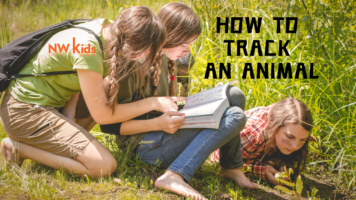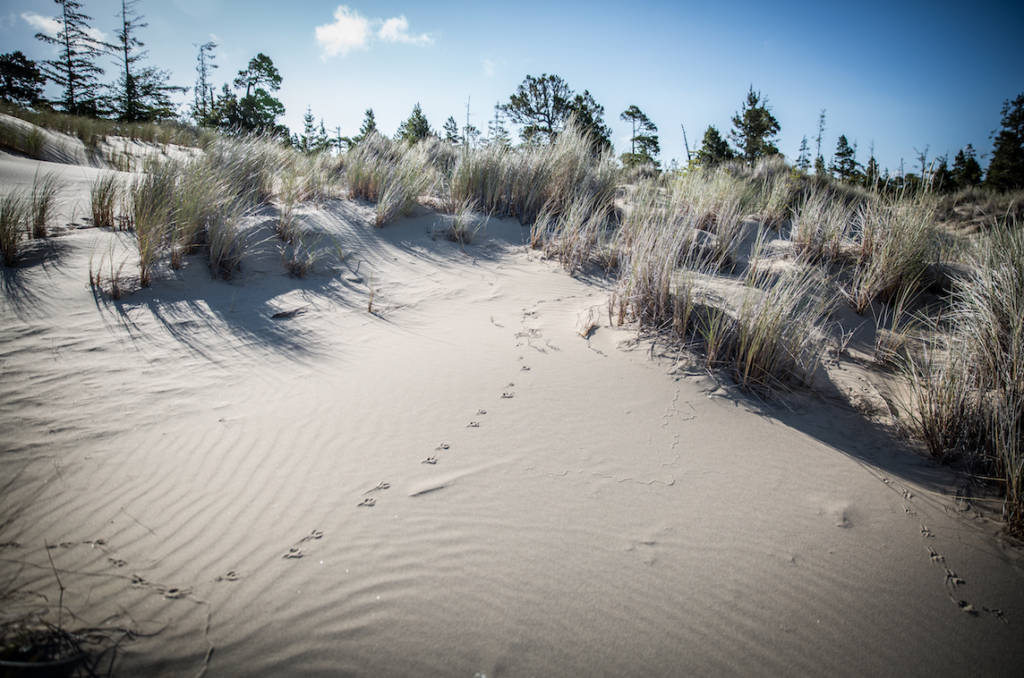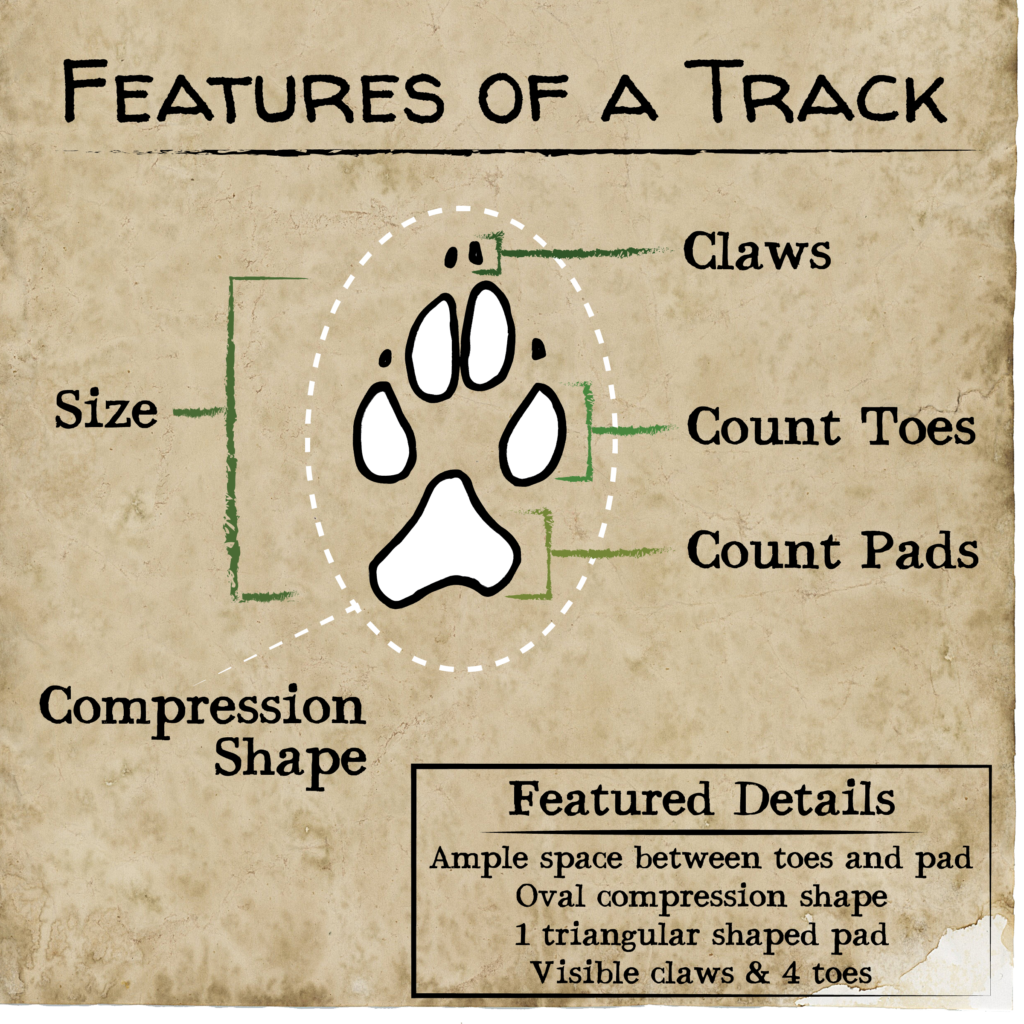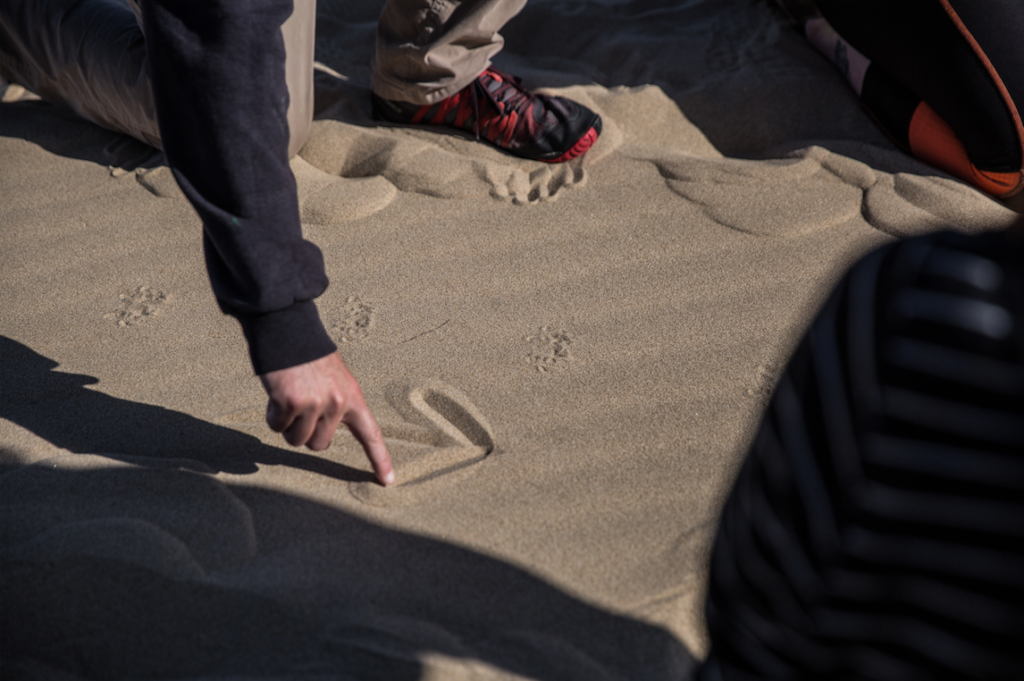How to Track an Animal


Animal tracking is a great activity to get the family outside and in nature. Through tracking, you and your kids can solve wildlife mysteries together. You learn the stories of animals secretly hidden beyond human eyes. From backyards and playgrounds to public parks and forests, animal tracks are all around us. Use this guide to begin learning about the comings and goings of our animal neighbors.
A Quick Note on Staying Found.
If you’re searching for and following animal tracks, chances are you’re headed off the beaten path. So the first thing to remember is how to stay found.
- Tell somebody where you’re going. Tell them when to expect to hear from you.
- Bring a compass and a topographical map of the area.
- Memorize landmarks, especially ones just behind you.
Ok I’ve Found a Track. Now What?
There are five questions we ask that help us investigate tracks. We call them the Five Fingers of Tracking.

Thumb of Tracking – Who is This Animal?
So you found a track! The first step is to identify which animal it belongs to. Start with the size of the track— for example, a house cat will be smaller than a cougar. Next, observe its overall shape and detailed features. Match the following observations with the examples in one of the animal tracking field guides listed!
- Count the number of toes. But be careful! Not all toes register (show up) consistently. Look at other tracks to confirm your observations.
- See if there are claw marks. Dogs show claws, cats do not. Porcupine show long claws.
- Look at the shape and size of the heel pad.
Index Finger of Tracking – What is This Animal Doing?
Each animal has its own unique way of moving. Finding a line of tracks helps you understand the gait (how an animal moves). This line of tracks forms its own pattern, depending on the animal’s speed. Your field guide is a great resource to sort out the front from the back feet, the first step (pardon the pun). After sorting fore from rear, try and move like the animal, recreating the gait with your own tracks. Gaits can be complicated, so play with it at first. Later, those same field guides can help you go more in-depth with this topic.
Long Finger of Tracking – When Was It Here?
“When” the animal passed by can be a challenging but fun question to master. There are a few tricks that can help us “age” a track. Pay attention to the weather. Has it rained recently? Was there frost that morning? What other elements can wear away that track? MISSION: Press your finger into the ground near the track. If your fingerprint looks similar to the track, the animal may have passed by recently.
Ring Finger of Tracking – Why Was The Animal Here?
“Why” an animal visits and area is often directly tied to something they need for survival. In order to understand this, we need to look at an animal’s habitat—where it lives. What food is in the surrounding area that the animal may eat? Is there shelter from inclement weather or even a way to hide? Is it breeding season? Even the wind direction, which carries scent, affects why an animal moves through an area. Read about each animal’s survival needs and connect that knowledge to the water, trails, plants and trees you find right around you. MISSION: Find a place in your backyard or nearby park that you visit every day. Sit in this place anywhere from 10 minutes to 1 hour, and map the plants and trails around you. At first, it might look like a wall of green, but very soon you begin to notice the busy town of mice, raccoons, and birds who share your neighborhood.
Pinky of Tracking – Where Is It Going, and Where Did It Come From?
Following and finding the animal—this is known as trailing. Start with how many tracks you can find in a row. But trailing goes beyond the tracks, too. Bits of fur stuck on a branch are great clues. Use all your senses to find the animal. Smell for urine posts. Listen to the birds. The alarm calls of robins and other feathered friends call tell you if a bobcat or coyote is passing by. With practice and knowledge of the landscape, you can learn to predict where you might find an animal based on its needs. If it’s really dry, they might seek water. If the weather is challenging, they might hunker down in sheltered areas. MISSION: A fun game to learn trailing starts by dragging a stick through the forest. Start with an obvious line and slowly make it harder to find. Go back to the start and follow your kids, friends, or family as they try to follow your trail and find the prize at the end.

This Sounds Like So Much Fun! But Where Should I Go?
Head to floodplains and areas near rivers. The softer surfaces like mud, silt, and sand, are great for capturing tracks. Here are some of the places we love to go:
And What About Those Field Guides?
We recommend:
- Mammal Tracks and Signs by Mark Elbroch
- Peterson Field Guide to Animal Tracking by Olaus Johan Murie
- Mammals of the Pacific Northwest by Chris Maser
At Trackers, we teach animal tracking for both kids and adults in our camps and classes. Check out TrackersPDX.com for upcoming options for all ages!

